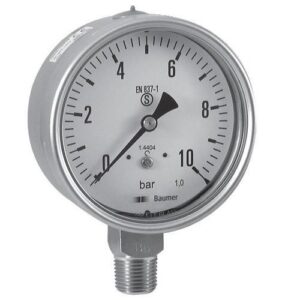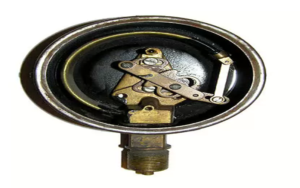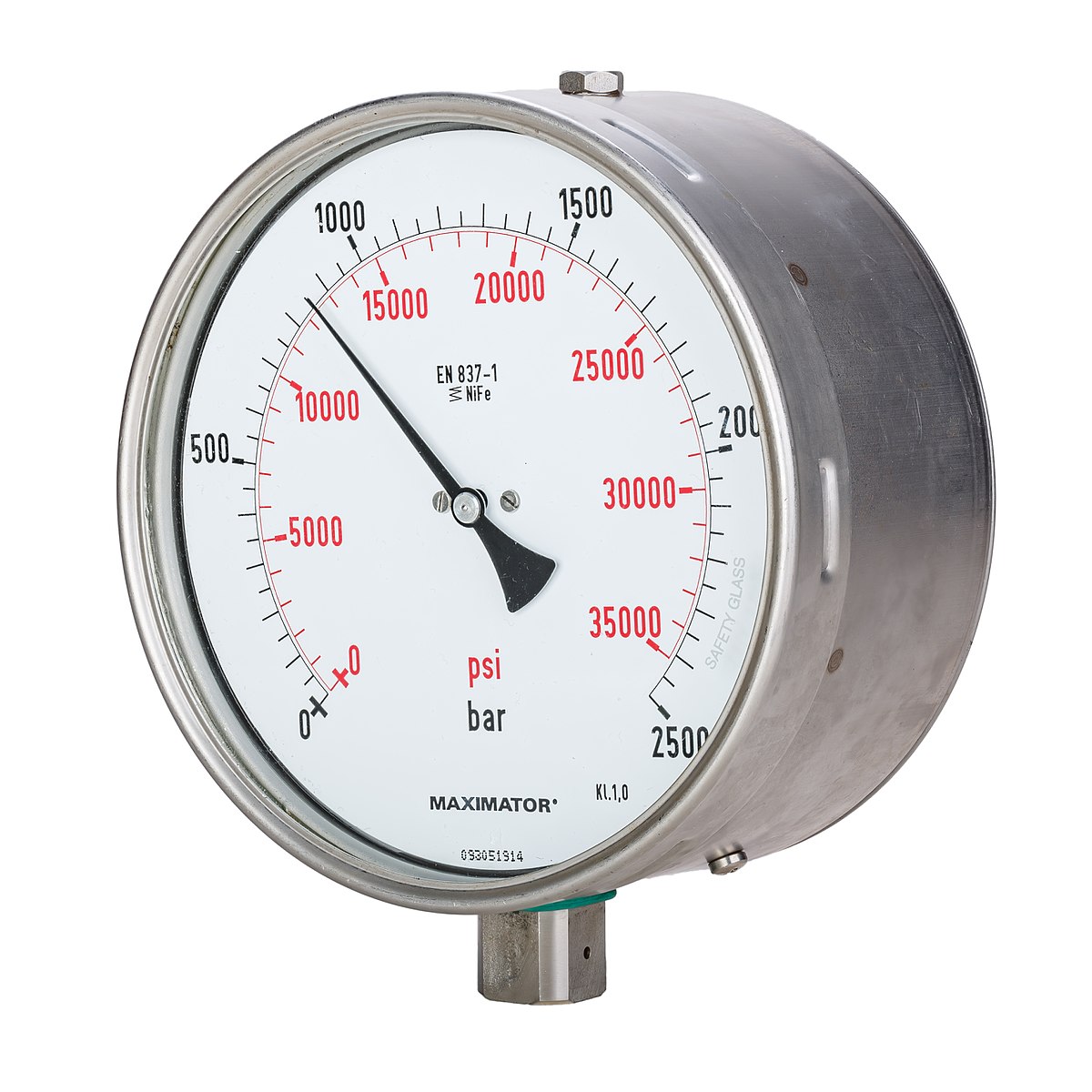Introduction
Pressure gauges are important instruments used in various industries to measure and monitor pressure levels in systems and processes. They come in analog dial and in digital display.
Whether it’s in manufacturing, oil and gas, HVAC, or chemical processing, these gauges play a critical role in ensuring the safety, efficiency, and reliability of operations.
In this post, we will explore the fundamentals, their types, applications, and the importance of accurate pressure measurement.
What is a Pressure Gauge in instrumentation?
A pressure gauge is a mechanical device used to measure and display the pressure of a gas or liquid within a closed system.
It indicates pressure on its dial or shows pressure in readings depends on the type of gauge.
It consists of several components including-
a pressure-sensing element,
a pointer,
a dial,
and often a protective casing.
“The pressure sensing element is responsible for translating the applied pressure into mechanical motion that results in the rotational motion of the pointer, thus indicating the pressure level on the dial.“
So that you can easily read the readings of pressure on the gauge.

Understanding Pressure Units
These gauges measure pressure in different units, depending on the application and location.
Some of the commonly used pressure units include
pounds per square inch (psi), bars, kilopascals (kPa), atmospheres (atm), millimeters of mercury (mmHg), millimeters of water columns (mmwc).
It’s essential to understand the units used in specific industries to ensure accurate readings and prevent potential errors.
Generally two units are written on the gauge. As shown in the image below.

Types of Pressure Gauges
Gauges come in various types, each suited for different applications and environments. Some common types include:
Bourdon Tube Pressure Gauges:
This gauge is the most popular. It’s made up of a tube that’s curved, usually made out of metal, that straightens out when pressure is applied to it. The rotation of the tube translates into the rotation of the pointer.

Diaphragm Pressure Gauges:
Diaphragm gauges use a flexible diaphragm that deforms with pressure changes.
The movement of the diaphragm is conveyed to the pointer, indicating the pressure.
Capsule Pressure Gauges:
A Capsule Pressure Gauge is similar to a Diaphragm Gauge, but it’s made up of two pieces of material that have been welded together. When pressure is applied, the two pieces of material expand or contract, which moves the pointer.
Differential Pressure Gauges:
These gauges measure the difference in pressure between two points in a system.
They are useful for applications such as filter monitoring and flow measurement.
Digital Pressure Gauges:
Digital gauges have become really popular in recent years because they’re so accurate and easy to use. They show you how much pressure you’re holding on an electronic display, and some even have extra features like logging data and remote monitoring.
Applications of Pressure Gauges
These gauges find applications in numerous industries, and their usage is vital for the following reasons:
a. **Safety Monitoring:** In industries dealing with hazardous substances or high-pressure systems, these gauges are critical in ensuring safe working conditions.
They provide real-time information about pressure, enabling operators to take necessary precautions.
b. **Process Control:** These gauges help maintain optimal pressure levels within industrial processes.
Deviations from the desired pressure can impact product quality, efficiency, and overall production costs.
c. **Equipment Health Monitoring:**
These gauges also act as diagnostic tools.
Sudden pressure drops or spikes may indicate potential issues that require immediate attention.
d. **Environmental Monitoring:** These gauges play a role in environmental applications, such as weather forecasting, barometric pressure measurement, and altitude determination.
Importance of Accurate Pressure Measurement in instrumentation
Accurate pressure measurement is essential for several reasons:
a. **Product Quality:** In industries like pharmaceuticals and food processing, manufacturing, precise pressure control is crucial for maintaining the quality and consistency of products.
b. **Energy Efficiency:** Properly calibrated pressure gauges help optimize energy consumption by ensuring that systems operate within the desired pressure range.
c. **Equipment Longevity:** Over-pressurization can lead to equipment damage, while under-pressurization can cause inefficiencies.
Accurate pressure measurement helps extend the lifespan of machinery.
d. **Regulatory Compliance:** Many industries are subject to regulations that dictate pressure levels.
Accurate pressure gauges ensure compliance with these regulations.
Calibration and Maintenance
Regular calibration and maintenance are essential to ensure the accuracy and reliability of gauges.
Factors like temperature, vibration, and wear can affect gauge performance over time.
Scheduled calibration by trained instrumentation technicians helps identify and correct any inaccuracies.
Conclusion
Pressure gauges are indispensable tools used across diverse industries to measure and monitor pressure levels in systems and processes.
With various types available, each designed for specific applications, pressure gauges provide essential data that ensures safety, efficiency, and quality in industrial operations.
Regular calibration and maintenance are necessary to ensure their accuracy, and advancements in technology continue to enhance their capabilities, making them even more valuable in today’s fast-paced and demanding industrial landscape.
Home Page Our Facebook Page Our You Tube Channel